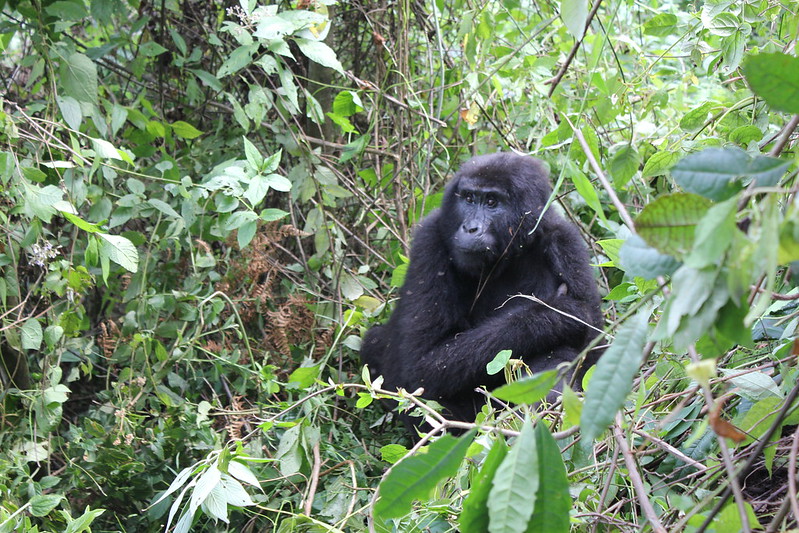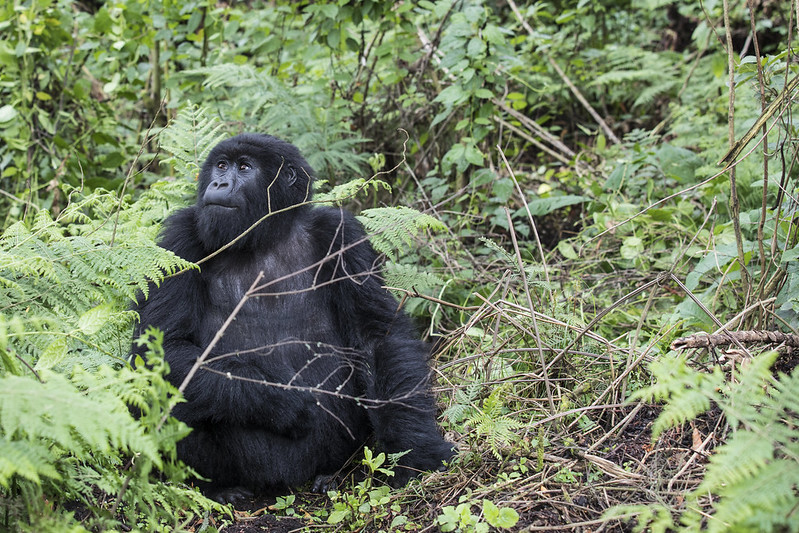
What to do after gorilla habituation experience in Bwindi impenetrable national park
What to do after gorilla habituation experience in Bwindi impenetrable national park.
The Gorilla Habituation Experience is an intriguing activity in Bwindi Impenetrable National Park where the wild mountain gorillas are tamed to become accustomed to human presence for hiking. What to do after the experience? The Kanungu district in southwestern Uganda is home to Bwindi Impenetrable National Park.
The endangered mountain gorillas, which are found in four sectors—Buhoma in the north, Nkuringo in the south, Rushaga in the south, and Ruhija in the east—are the most well-known feature of Bwindi Impenetrable National Park. A maximum of four individuals can hike a gorilla family each day during the gorilla habituation experience, which is only available in the Rushaga Sector in the southern portion of Bwindi Impenetrable National Park.
In Bwindi Impenetrable National Park, the gorilla habituation experience begins very early in the morning with a briefing on the guidelines to be followed while hiking. Following the briefing, you will begin a daylong journey into the jungle with a group of researchers, park guides, and rangers.
During the trek, you will get the opportunity to see many creatures, birds, and other primates. After locating the mountain gorillas, you will be permitted to spend four hours in their natural habitat, allowing you to observe and learn about their behaviors, take pictures and movies, and watch them go about their everyday lives.
What to do in Bwindi Impenetrable National Park following a gorilla habituation experience
Cultural tour of Batwa
After seeing gorilla habituation at Bwindi Impenetrable National Park, you can partake in an intriguing excursion called the Batwa Cultural Tour. Interacting with the Batwa people, who once inhabited Bwindi Forest before it was gazetted as a national park, will allow you to learn about their culture, way of life, and hunting and gathering techniques. You will also have the opportunity to visit their homesteads, hear their ancient stories, sample their traditional cuisine, and take in their traditional entertainment, among other things.
Nature walks with a guide
Following your gorilla habituation experience, you can embark on an exciting nature trek in Bwindi Impenetrable National Park. An experienced park guide and armed park officers will accompany you on the nature walk to keep you safe from potentially harmful animals. You will follow various paths throughout the guided nature walk, such as the waterfall route, where you may see primates including L’hoest monkeys, black and white colobus monkeys, red-tailed monkeys, and blue monkeys. You will also see a variety of bird species, stunning landscape, and a cool breeze, among other things.
Nature walks and seeing birds
Following a gorilla habituation experience, visitors can partake in another fascinating activity at Bwindi Impenetrable National Park: birdwatching. One of the greatest places to go birdwatching is Bwindi Impenetrable National Park, which is home to more than 360 known bird species, including migratory, forest, and 23 of the 24 Albertine Rift endemics. An expert bird guide will accompany you while you observe birds in Bwindi Impenetrable National Park.
They will assist you in identifying various bird species, such as the African Harrier Hawk, Black Bee-eater, Crowned Hornbill, Ruwenzori Nightjar, Yellow-eyed Black Flycatcher, Archers Robin Chat, Strange Weaver, Handsome Francolin, Shelley’s Crimsonwing, Dwarf Honeyguide, Purple-breasted Sunbird, Brown-capped Weaver, Strange Weaver, Chapin’s Flycatcher, and more.
Following your gorilla habituation experience in Bwindi Impenetrable National Park, you can engage in a variety of other fascinating activities, such as a chimpanzee trek in Kyambura Gorge or Kibale Forest National Park, a lion tracking experience, a boat cruise on the Kazinga Channel, wildlife viewing and game drives in Queen Elizabeth National Park, and more.
The best time to visit Bwindi Impenetrable National Park to witness gorilla habituation
The best time to gorilla habituate in Bwindi Impenetrable National Park is during the dry season, which includes June, July, August, September, December, January, and February. This is because there is less rainfall in the park during this time, making the access roads and gorilla trekking trails dry and passable, which facilitates the gorilla habituation process.
The price of a gorilla habitat permit in the impenetrable national park of Bwindi
In Bwindi Impenetrable National Park, a gorilla habituation permit costs 1,500 USD per person for non-resident foreigners, 1,000 USD per person for residents, and 750,000 UGX per person for inhabitants of East Africa.
Accommodations for your safari in the impenetrable national park of Bwindi
Rushaga Gorilla Lodge, Gorilla Safari Lodge, Ichumbi Lodge, Rushaga Gorilla Haven Lodge, Gorilla Heights Lodge, Four Gorillas Lodge, Clouds Mountain Gorilla Lodge, Bwindi Gorilla Lodge, Gorilla Leisure Lodge, Mutanda Lake Resort, Lake Chahafi resort, Nshongi Camp, Bwindi Jungle Lodge, Lake Mulehe Gorilla Lodge, Wagtail Eco Safari Lodge, and Bweza Lodge are just a few of the affordable, midrange, and luxury lodging options available in Bwindi Impenetrable National Park.
How to get there
It takes roughly nine to ten hours to drive from Kampala via Masaka, Mbarara, Kabale, and finally to Rushaga Sector in a safari vehicle to reach Bwindi Impenetrable National Park, which is situated in the southwest region of Uganda.
Booking scheduled or charter domestic flights from Entebbe International Airport to Kisoro Airstrip and then connecting to the park headquarters via road is another way to reach Bwindi Impenetrable National Park. You can arrange domestic flights to the impenetrable national park of Bwindi with your reliable trip operator.
It takes roughly four to five hours to travel from Kigali, Rwanda, to Bwindi Impenetrable National Park. To get there, you must fly to Kigali International Airport and then cross to Rushaga Sector via the Cyanika border in Kisoro or the Katuna border in Kabale.


